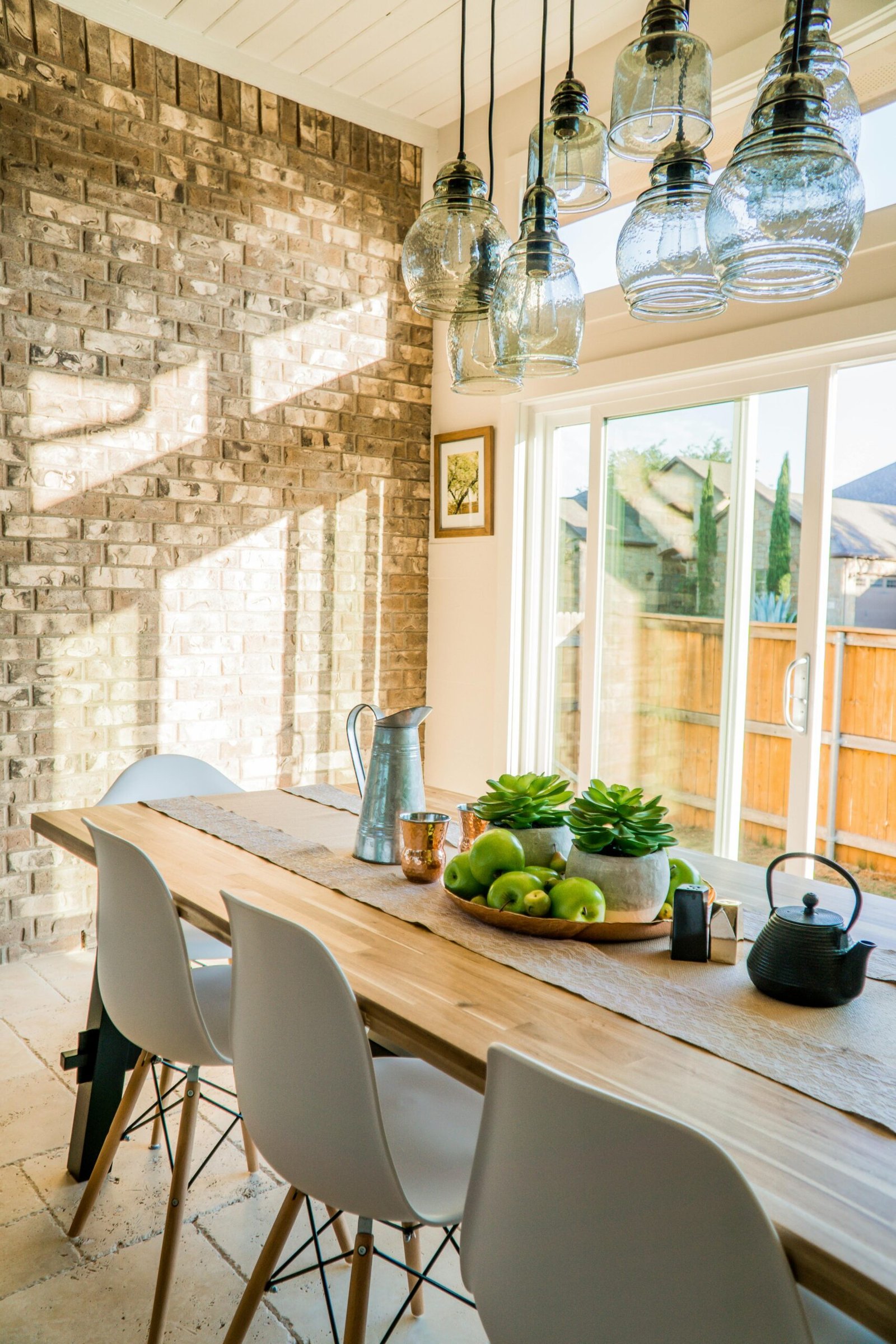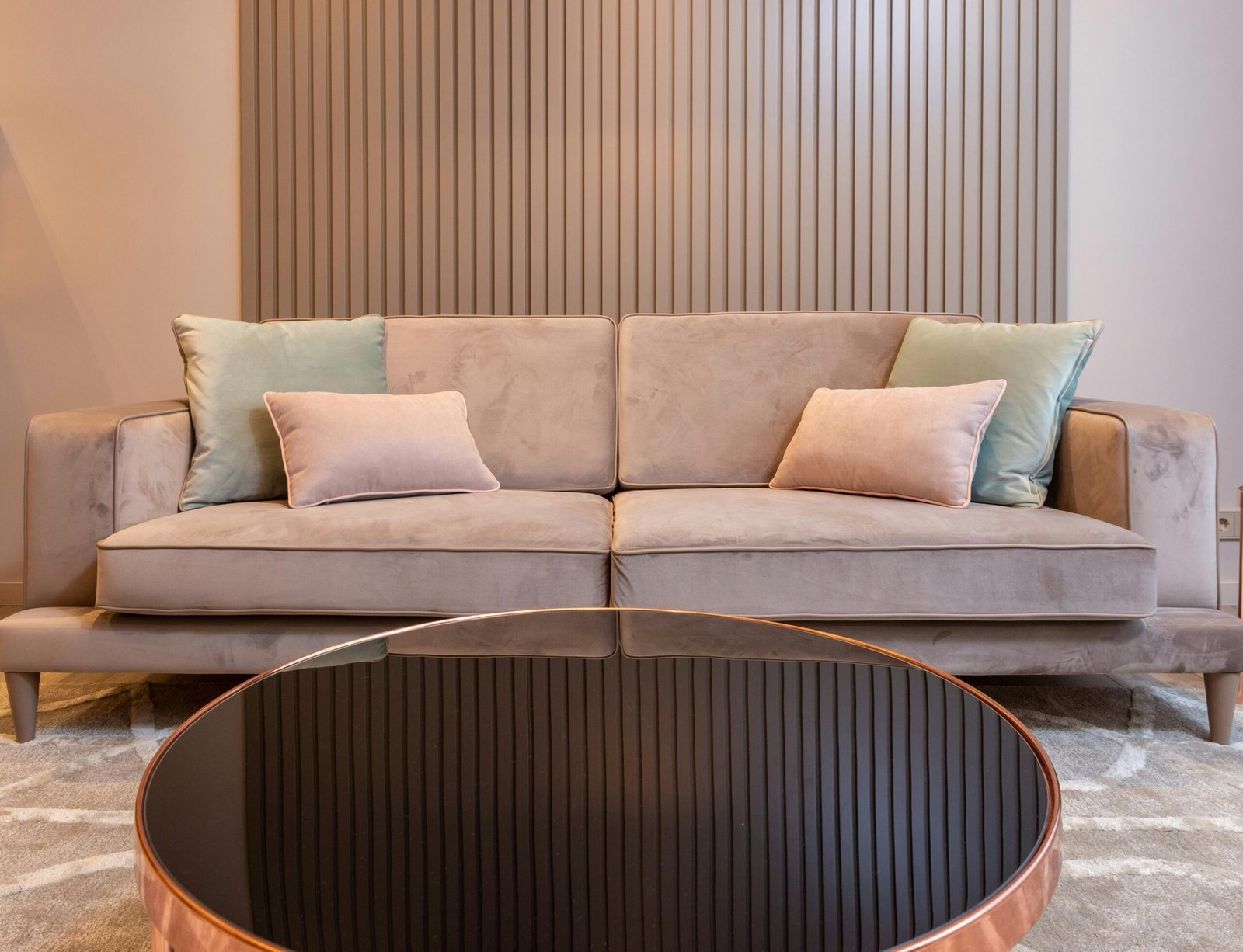As sustainability continues to rise in importance, many homeowners are looking for ways to make their living spaces both stylish and environmentally responsible. Eco-friendly home decor not only helps reduce your carbon footprint but also contributes to a healthier, more mindful living environment. By embracing sustainable materials, energy-efficient practices, and conscious design choices, you can create a home that is both beautiful and good for the planet.
In this guide, we’ll explore 10 sustainable home decor trends for 2024 that will help you achieve an eco-friendly aesthetic while still maintaining style and functionality.
1. Reclaimed and Upcycled Furniture
Reclaimed and upcycled furniture is one of the most impactful ways to create a sustainable home. By reusing old furniture, you’re giving new life to materials that might otherwise end up in a landfill. Whether it’s an antique chair refinished with eco-friendly paint or a wooden coffee table made from salvaged wood, upcycled pieces add character and sustainability to any room.
How to Incorporate Reclaimed Furniture:
- Shop at secondhand stores or flea markets for vintage pieces that can be repurposed.
- Refinish old furniture yourself with eco-friendly paint and varnish for a modern twist.
- Look for local artisans or businesses that specialize in upcycled or reclaimed furniture.
Tip: Choose pieces that are both functional and meaningful, as they can tell a story and add unique character to your space.
2. Natural and Organic Materials
When it comes to eco-friendly decor, natural materials are always a top choice. Wood, stone, cotton, linen, and wool are all renewable resources that provide a timeless, organic feel to any room. These materials not only have a minimal environmental impact but also bring a sense of calm and warmth to your home.
Best Natural Materials to Use:
- Wood: Opt for sustainably sourced or reclaimed wood furniture and accents.
- Bamboo: A fast-growing, renewable material perfect for flooring, furniture, and decor items.
- Cotton and Linen: Choose organic cotton or linen fabrics for upholstery, bedding, and curtains.
Tip: Focus on pieces with simple designs to showcase the beauty of the natural materials while maintaining a minimalist, sustainable aesthetic.
3. Energy-Efficient Lighting
Lighting plays a crucial role in setting the ambiance of a room, and with energy-efficient lighting options, you can achieve a warm, inviting glow while reducing energy consumption. LED lights and solar-powered options are both energy-efficient and long-lasting, making them an ideal choice for sustainable home decor.
How to Incorporate Energy-Efficient Lighting:
- Replace incandescent bulbs with LED or CFL bulbs, which use less energy and last longer.
- Use motion-sensing lights in hallways or bathrooms to minimize wasted energy.
- Install solar-powered lights for outdoor areas like gardens or patios.
Tip: Consider adding dimmer switches or smart lighting to further control energy use and customize the mood of your rooms.
4. Indoor Plants and Greenery
Indoor plants not only add a lush, vibrant look to your home but also improve air quality by absorbing carbon dioxide and releasing oxygen. The trend of integrating more greenery into your home is not only sustainable but also adds an organic aesthetic to your decor.
Popular Plants to Incorporate:
- Snake plants: Low-maintenance and excellent for improving air quality.
- Pothos: A hardy plant that thrives in a variety of lighting conditions.
- Fiddle-leaf fig: Adds a bold, sculptural element to any room.
Tip: Use planters made from recycled or biodegradable materials to enhance your eco-friendly aesthetic.
5. Eco-Friendly Paints and Finishes
Traditional paints can contain harmful chemicals that impact both your health and the environment. Thankfully, eco-friendly paints made from natural ingredients are becoming increasingly popular. These paints are low in VOCs (volatile organic compounds), making them safer for indoor air quality and better for the planet.
How to Use Eco-Friendly Paints:
- Look for paints labeled “low-VOC” or “no-VOC” for a safer, more sustainable option.
- Consider natural alternatives like clay or milk paints for an even more eco-conscious choice.
- Choose neutral or earth-toned colors for a calming, timeless look.
Tip: Reuse old paint containers and dispose of any leftover paint responsibly to minimize waste.
6. Sustainable Rugs and Textiles
When decorating your home, consider the environmental impact of your textiles. Opt for rugs, cushions, and throws made from sustainable materials like organic cotton, jute, wool, or hemp. These fabrics are not only eco-friendly but also provide a natural, earthy texture that enhances your home’s aesthetic.
Eco-Friendly Textiles to Use:
- Jute and Sisal Rugs: Made from natural fibers, these rugs are durable and biodegradable.
- Wool: Choose ethically sourced or organic wool for rugs, throws, and pillows.
- Recycled Fabrics: Look for products made from recycled materials, such as reclaimed denim or plastic bottles.
Tip: Choose neutral or natural colors to create a calm, grounded look that complements your sustainable home aesthetic.
7. Sustainable Wall Art
Wall art is an easy way to personalize a room, and there are many eco-friendly options to choose from. From prints on recycled paper to art created using repurposed materials, you can make a stylish statement while supporting sustainable practices.
How to Incorporate Eco-Friendly Art:
- Look for artwork made from upcycled materials, such as reclaimed wood, metal, or fabric.
- Choose prints on recycled paper or bamboo canvas for an environmentally friendly option.
- Support local artists who use sustainable materials and ethical practices.
Tip: Mix art with indoor plants to create a natural, earthy vibe that is both eco-conscious and visually appealing.
8. Minimalist Design for Less Waste
Adopting a minimalist approach to home decor is one of the best ways to maintain an eco-friendly aesthetic. By focusing on quality over quantity, you can avoid clutter and reduce waste while still achieving a stylish look. The minimalist trend emphasizes clean lines, functional furniture, and thoughtful design choices.
How to Create a Minimalist Home:
- Invest in a few high-quality, timeless pieces instead of accumulating excess furniture and decor.
- Use neutral tones and simple, elegant designs that won’t go out of style.
- Embrace “less is more” by only displaying what is functional or meaningful.
Tip: Repurpose or donate items that no longer serve you to reduce waste and clutter in your home.
9. Recycled and Upcycled Decor
Recycling and upcycling are two of the most effective ways to reduce waste while still creating a stylish home. By reusing materials or transforming old items, you can add unique, eco-friendly touches to your home without contributing to the growing landfill problem.
How to Incorporate Recycled and Upcycled Items:
- Repurpose old furniture with a fresh coat of paint or new upholstery.
- Use recycled glass, metal, or wood for unique decor items like vases, trays, or shelves.
- Upcycle textiles like old jeans or shirts into pillows, throws, or rugs.
Tip: Get creative with DIY projects using recycled materials to add a personalized, eco-friendly touch to your space.
10. Sustainable Window Treatments
Your window treatments can also be made with sustainability in mind. Instead of opting for synthetic fabrics, choose curtains and blinds made from organic cotton, bamboo, or linen. These materials are not only eco-friendly but also have a natural, light feel that contributes to your home’s overall aesthetic.
How to Choose Sustainable Window Treatments:
- Look for curtains made from organic cotton or hemp fabric for a breathable, natural option.
- Consider bamboo blinds, which are durable, sustainable, and visually appealing.
- Choose window coverings that are both functional and stylish to maintain a minimalist, eco-conscious design.
Tip: For energy efficiency, consider layering natural fabric curtains with insulating blinds to help regulate temperature and reduce heating costs.
Conclusion: Creating a Stylish, Sustainable Home
By embracing sustainable home decor trends, you can create a beautiful, eco-friendly living space that reflects your values while maintaining a chic, stylish aesthetic. From reclaimed furniture to eco-friendly textiles and lighting, there are endless ways to make your home more sustainable without compromising on style.
Whether you’re completely redesigning your space or simply looking to make small adjustments, these trends will help you build a home that is both environmentally responsible and visually stunning. Make conscious choices, invest in quality, and enjoy the satisfaction of knowing your home is contributing to a healthier planet.
5 Unique FAQs
- What is the most sustainable material for home decor?
Natural materials like bamboo, reclaimed wood, wool, and organic cotton are considered some of the most sustainable choices for home decor. - Can I find eco-friendly decor on a budget?
Yes, shopping secondhand, upcycling old items, and opting for minimalistic designs can help you create a sustainable home without spending a lot of money. - Are eco-friendly paints as durable as conventional paints?
Yes, eco-friendly paints are often just as durable as conventional paints, and many brands now offer options that are low-VOC or non-toxic. - How do I make my home more energy-efficient without major renovations?
You can use energy-efficient lighting, choose natural fabrics for window treatments, and add plants to improve air quality and insulation without major renovations. - What are some easy eco-friendly home decor changes I can make today?
Start by adding plants, using recycled decor, switching to LED lighting, and choosing more natural materials for pillows, curtains, and rugs.




